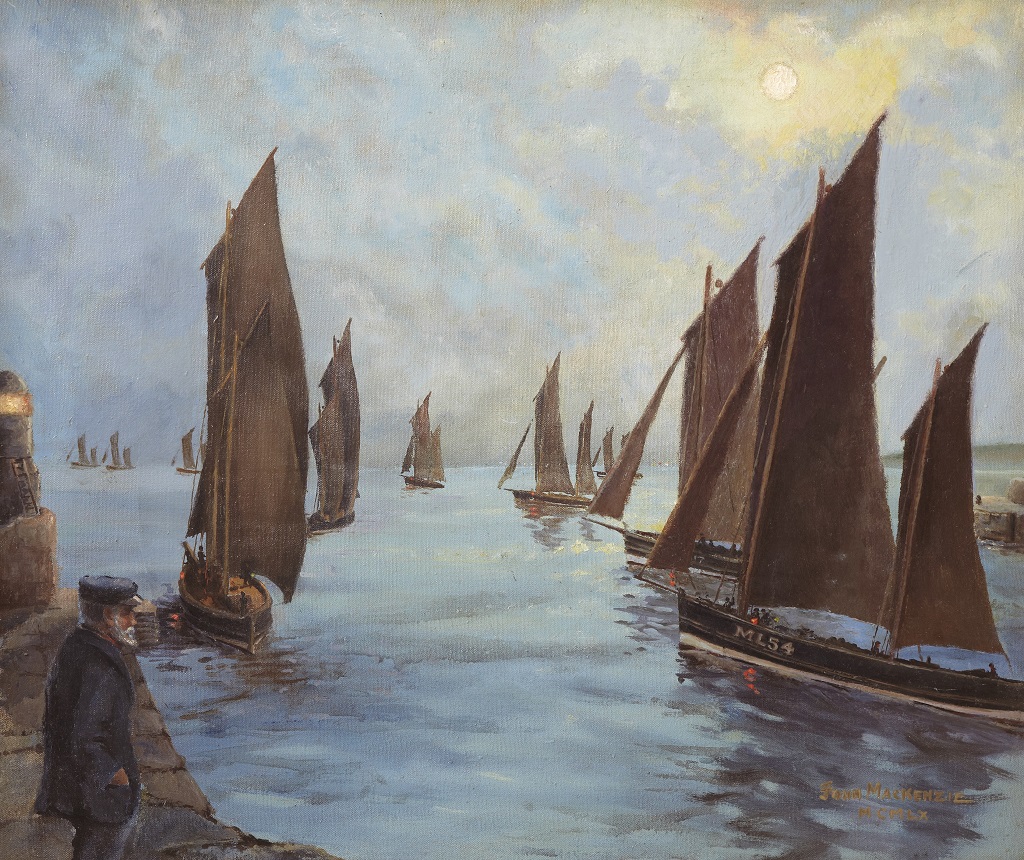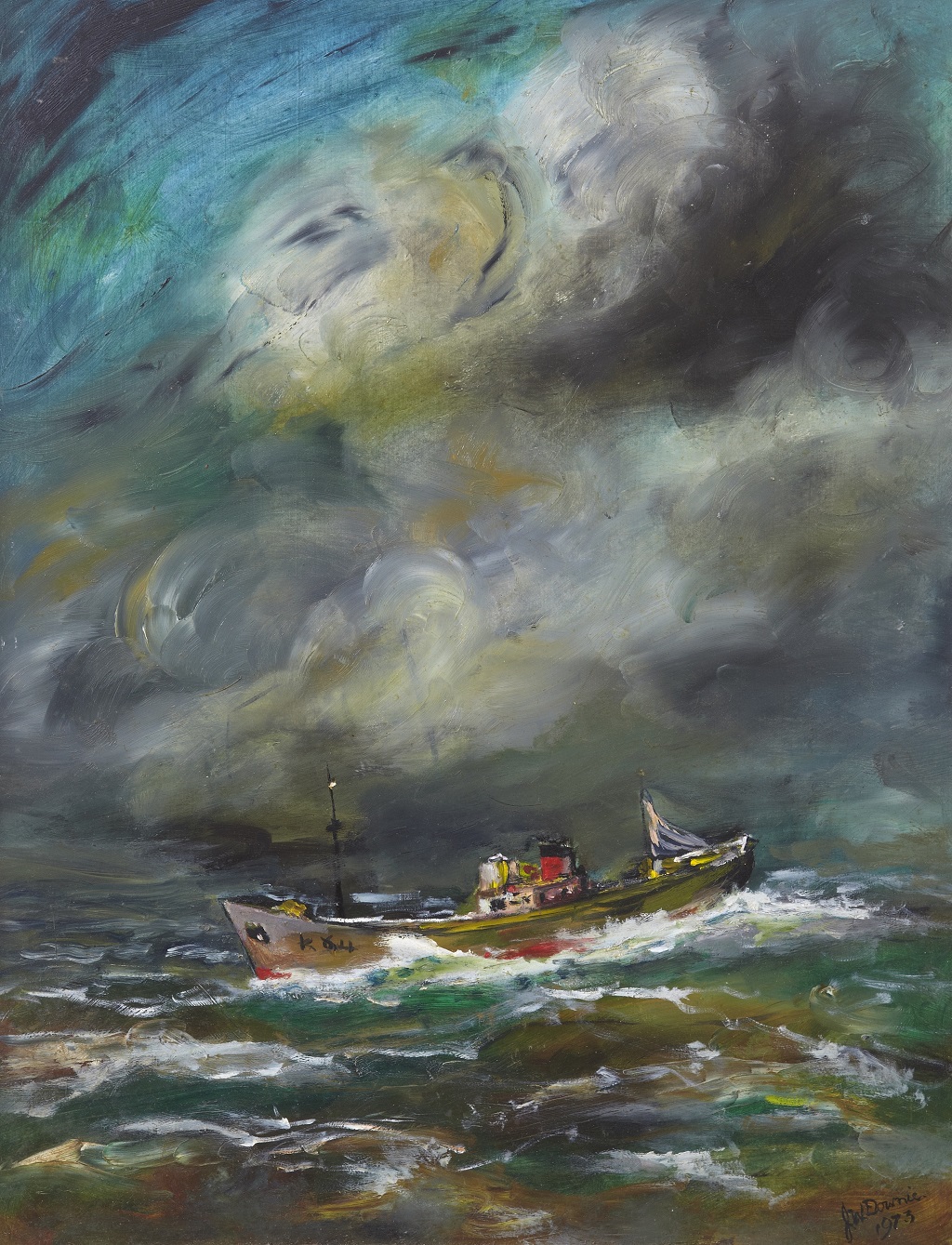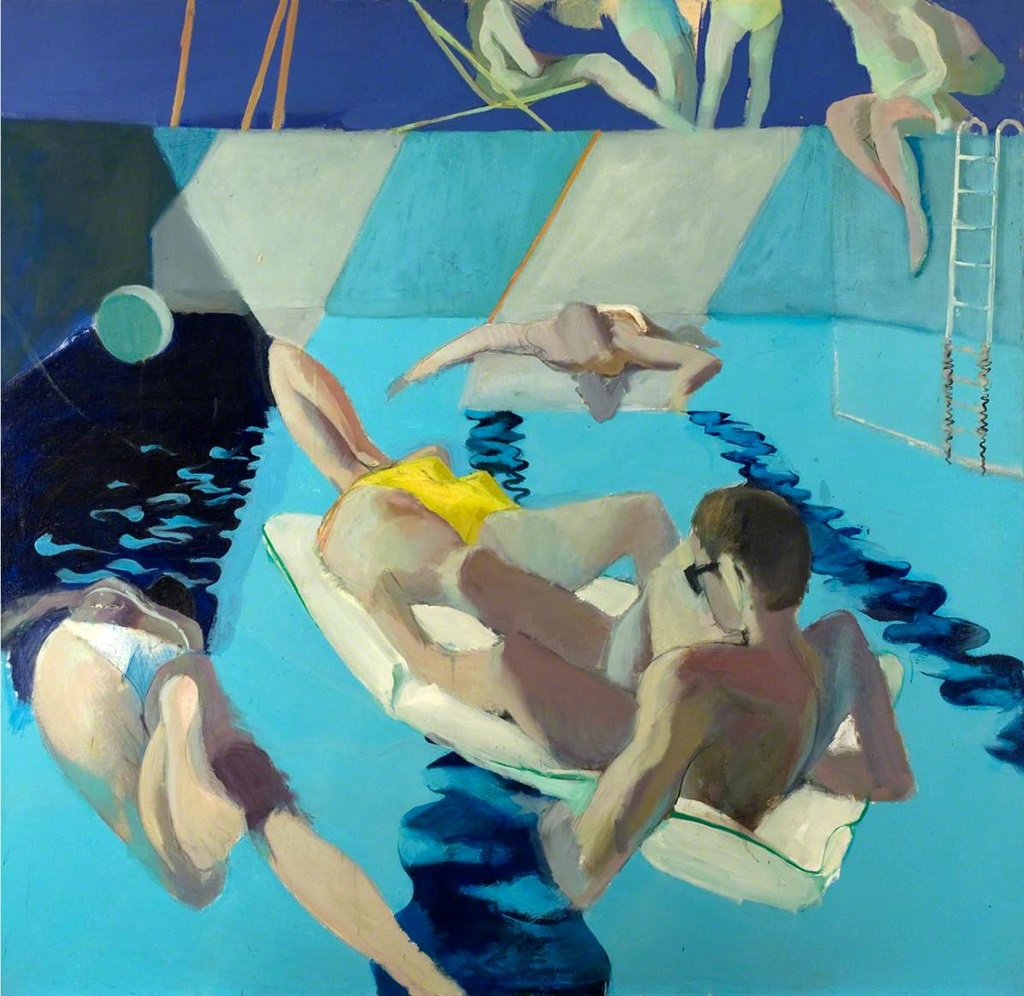
New art exhibition celebrates healing power of the sea
A colourful, multi-media exhibition exploring the powerful mental and physical wellbeing and inspiration we draw from our blue space is now open at the Scottish Fisheries Museum on picturesque Anstruther Harbour in the East Neuk of Fife.
A collaboration between postgraduate students at the University of St Andrews and the Scottish Fisheries Museum, By the Seaside: Heritage, Healing and New Horizons plunges headfirst into our centuries old fascination with our seas, rivers and lochs as a place for healing and artistic inspiration.
Highlights of the new exhibition, which runs until 22 August, include paintings, seaside photographs, reminiscences and vintage swimming costumes.
With the onset of the Covid-19 pandemic, By the Seaside: Heritage, Healing and New Horizons took on a new relevance for the curators. Faced with remote working whilst designing their first professional exhibition, the museums and galleries students felt the shared sense of isolation and uncertainty throughout the world. Suddenly, this exhibition on the ocean’s ability to heal and inspire became increasingly important for mental and physical health in everyday lives.

John MacKenzie, Fifies Leaving Buckhaven Harbour, 1960
Linda Fitzpatrick, curator at the Scottish Fisheries Museum, said: ‘We are delighted to collaborate with St Andrews University students on a theme which touches all our lives so positively in one way or another.
‘We have an innate human response to water. It makes us feel better physically and mentally and has inspired poets, writers and visual artists for centuries as well as provided a livelihood for fisherfolk.
‘We may not be dipping our toes in the water to alleviate “melancholy caused by an excess of black bile” like the Victorians but we do know that immersing ourselves in the sights and sounds of our blue space can lower stress levels, improve our mood, benefit our body and mind and inspire creativity. The exhibition is a wonderful way for visitors to explore our connection with water before taking a wander along Anstruther Harbour!’
Mattea Gernentz, By the Seaside: Heritage, Healing and New Horizons interpretation lead at St Andrew’s University added: ‘The exhibition simultaneously directs our gaze outwards and inwards, urging us to consider how blue spaces have impacted our creativity, growth and wellbeing, as well as pointing out ways that the sea has served as a means of both leisure and livelihood.’

J. W. Downie, Gale Force Nine, 1973
By the Seaside: Heritage, Healing and New Horizons features paintings drawn from the Museum’s national art collection. These include John MacKenzie’s ‘Fifies Leaving Buckhaven Harbour’ (1960) and ‘The Silver Darlings’ programme design for John McGrath’s adaptation of Neil M. Gunn’s famous novel about men and women navigating the brutal natural elements to fish herring (Annette Gillies 1994).
Paintings loaned by the University of Dundee include Arthur Rackham’s ‘Rhine Maiden Lamenting’ (1910), depicting a scene from Wagner’s Ring cycle.
Also on show are two photographic seascapes from ‘Stillness and Occurrence’, a series of images captured at Portobello by David Williams, former Head of Photography at Edinburgh College of Arts. Shot on medium format film using long exposures on sunny days with mild haar (coastal fog), they are rooted in his interest in non-duality and the reconciliation and integration of apparent opposites.
The exhibition also features old photographs of East Neuk beach scenes, capturing the bathing huts, adults lounging in the sun and atmosphere of cheery camaraderie, model boat sailing, fishing and the open air pool built in Cellardyke, Anstruther, in the 1930s.

William D. Henderson, Swimming Pool, 1965, oil on canvas
Two vintage swimming costumes from Fife Folk Museum accompany a look at the evolution of seaside fashion, from the flowing bathing costumes of the early 1900s to today’s colourful, form fitting swimwear. It wasn’t easy sailing. The two exhibited swimsuits from the 1920s illustrate a time where, as necklines fell and hemlines rose, women faced arrest for ‘indecent exposure’.
Also featured are other art forms inspired by the sea, including painted shells and ‘Ship in a Bottle’ (1968) and the exhibition podcast, Sound Waves, which includes interviews with wild swimmers, artists and fisherfolk across Fife.
Telling the story of the ‘boats, fish and folk’ of Scotland’s centuries old fishing industry, the Scottish Fisheries Museumextends over 18 galleries housed in handsome historic buildings and includes a fleet of nationally important historic vessels inside and on Anstruther Harbour, once Scotland’s busiest fishing port.
With Covid safety measures in place, and free entry for up to five children with each family, it is a great place to visit with friends and family.
By the Seaside: Heritage, Healing and New Horizons is included in Museum admission. Advance booking is required. Tickets are available at: www.scotfishmuseum.org
TAGS

